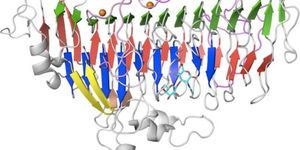Airplane turbulence could become stronger due to climate change
Last night I was shaken out of my superficial sleep with a jolt. The meaty hands of the man behind me grasped my chair tightly, shaking my seat even more. I quickly realized that in fact my flight was not landing, rather it was moving roughly in all directions, still in the air. I am a seasoned traveler, but even so, I didn’t resist when the older woman next to me grabbed my hand.
The turbulence only lasted several long minutes, but it was enough to shake up all of the passengers (and I’m sure the flight crew, too, despite their pasted on “reassuring” smiles). But such severe turbulence was perhaps not just a fluke. According to a new study from the University of Reading published in Advances in Atmospheric Sciences (AAS), turbulence strong enough to throw unbuckled passengers and crew around the aircraft cabin could become twice or even three times as frequent because of climate change. This is because climate change is generating stronger wind shears within the jet stream, which can quickly become unstable and cause the type of movement I experienced yesterday.
Using simulations from a supercomputer, researchers determined how wintertime transatlantic clear-air turbulence will change at an altitude of around 12 km (39,000 feet) when there is twice as much carbon dioxide in the atmosphere. The study looked at different turbulence strength levels in order to predicts how they might vary with more impacts from climate change. Their results show that the average amount of light turbulence in the atmosphere will increase by 59%, with light-to-moderate turbulence increasing by 75%, moderate by 94%, moderate-to-severe by 127%, and severe by 149%.
Dr. Paul Williams, the lead researcher, said: "Our new study paints the most detailed picture yet of how aircraft turbulence will respond to climate change. For most passengers, light turbulence is nothing more than an annoying inconvenience that reduces their comfort levels, but for nervous fliers even light turbulence can be distressing. However, even the most seasoned frequent fliers may be alarmed at the prospect of a 149% increase in severe turbulence, which frequently hospitalizes air travellers and flight attendants around the world."
He said it’s important to think of alternatives to the flight models we have in place currently. "My top priority for the future is to investigate other flight routes around the world. We also need to investigate the altitude and seasonal dependence of the changes, and to analyze different climate models and warming scenarios to quantify the uncertainties." After the turbulence my flight experienced last night, I would have to agree.
Sources: Environmental News Network, Institute of Atmospheric Physics









